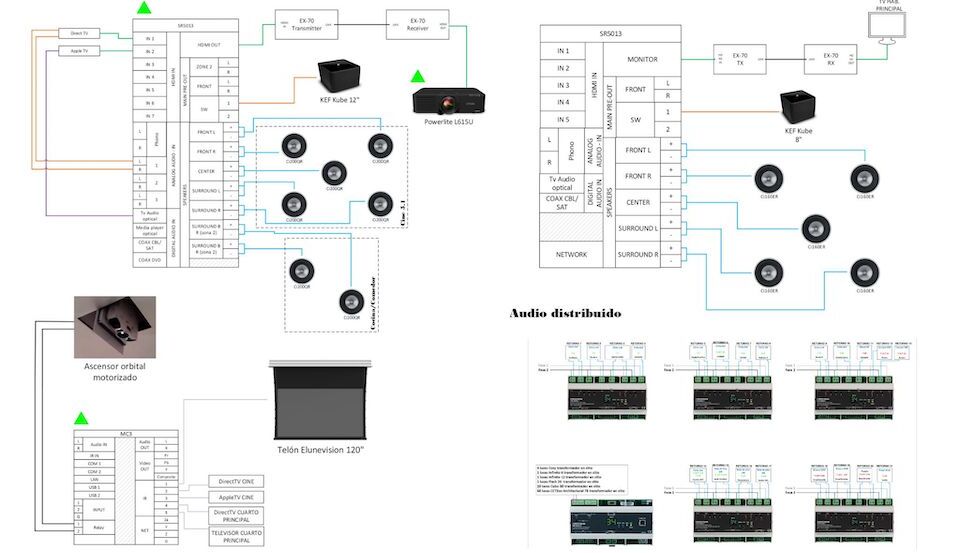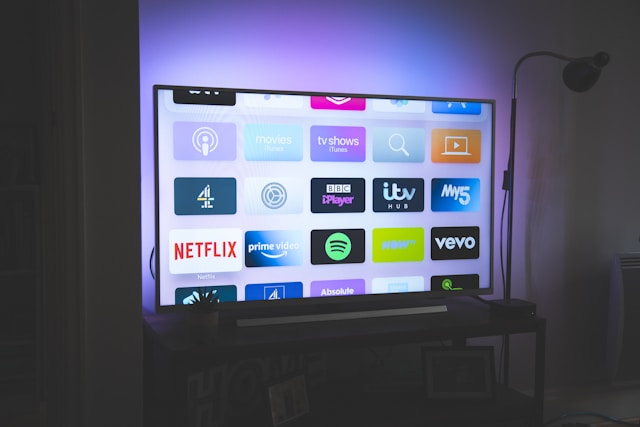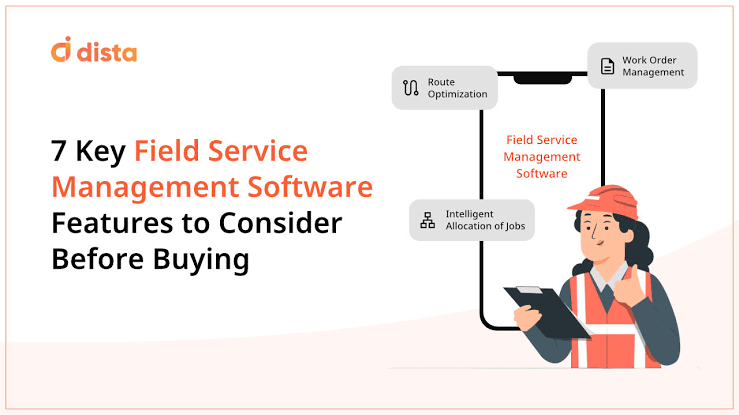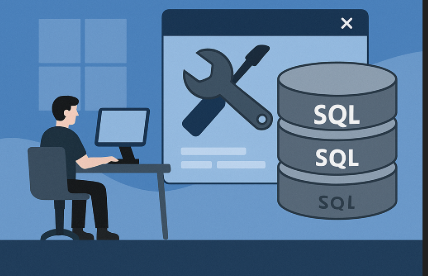Signal Flow Diagram Design: AutoCAD Alternatives

Strong 8k brings an ultra-HD IPTV experience to your living room and your pocket.
In the world of AV system integration, a well-designed signal flow diagram is crucial. It serves as the blueprint for the entire system, mapping out how audio, video, and control signals will be routed between devices. A clear, accurate signal flow diagram streamlines installation, troubleshooting, and maintenance.
Traditionally, many AV professionals have relied on AutoCAD, a powerful but complex general-purpose CAD tool, to create their signal flow diagrams and other system documentation. However, in recent years, several AutoCAD alternatives have emerged that are specifically tailored for AV system design. These similar programs to AutoCAD offer features and workflows that can significantly improve productivity for AV integrators and consultants.
In this comprehensive guide, we'll explore the key benefits of using a dedicated AV design tool instead of AutoCAD. We'll also take an in-depth look at one of the leading AutoCAD alternatives: XTEN-AV's X-DRAW, enhanced with the AI-powered XAVIA design assistant. By the end, you'll have a clear understanding of how these innovative tools are transforming the way signal flow diagrams and AV systems are designed.
Why Use an AV-Specific Design Tool Instead of AutoCAD?
While AutoCAD is undoubtedly powerful, it's not optimized for the unique needs of AV system design.
Here are some of the key advantages a dedicated AV design platform can offer over a general-purpose CAD tool like AutoCAD:
AV-centric interface and workflows: Rather than starting with a blank canvas, AV-specific tools provide an interface and workflow tailored around the components and signal paths of an AV system. This can make the design process more intuitive and efficient.
Extensive AV device libraries: Instead of creating blocks or searching for symbols, a good AV design tool will include a comprehensive library of devices from all the major manufacturers, complete with detailed properties like input/output ports and dimensions. This can save significant time and ensure accuracy.
Automated signal flow and connectivity: Advanced AV design software can intelligently detect device compatibility, suggest connections, and automatically route signals according to best practices. This reduces errors and tedious manual work.
Real-time collaboration: Cloud-based AV design platforms allow multiple users to work on the same diagram simultaneously, with changes syncing in real-time. This enables efficient collaboration, especially for larger projects or distributed teams.
Auto-generated documentation: Once the core system design is complete, AV-specific tools can instantly generate rack elevations, cable labels, bills of materials, and other key documentation. With AutoCAD, much of this has to be done manually or through complex customization.
Mobile friendliness: Since AV design platforms are increasingly cloud-based, they tend to work well on tablets and even smartphones. This allows for easy design review and field-based usage. AutoCAD's mobile experience is more limited.
Integration with other AV workflows: A dedicated AV design tool will often integrate with proposal, project management, and installation planning platforms. This allows the signal flow diagram to fit seamlessly into the overall project workflow. AutoCAD is more isolated.
While AutoCAD certainly still has its place, it's clear that AV-specific design tools offer compelling advantages in terms of efficiency, accuracy, and collaboration. Now let's take a closer look at one of the most innovative AutoCAD alternatives on the market: XTEN-AV's X-DRAW with XAVIA.
Introducing X-DRAW and XAVIA: The AI-Enhanced AutoCAD Alternative
XTEN-AV's X-DRAW, launched in 2022, has quickly become a leading AutoCAD alternative for AV professionals. It's a cloud-based, collaborative platform purpose-built for designing AV signal flow diagrams, rack layouts, and system documentation.
But what really sets X-DRAW apart is its integration with XAVIA, an AI-powered design assistant. XAVIA brings the power of artificial intelligence to AV system design, automating many time-consuming tasks and offering intelligent suggestions along the way.
Here are some of the key features that make the X-DRAW + XAVIA combo a compelling AutoCAD alternative:
1. AI-Powered Design Assistance
With XAVIA, X-DRAW is the first AV design platform to offer true AI integration. XAVIA can automatically generate:
Signal flow diagrams based on equipment lists and basic parameters
Optimized rack layouts considering device dimensions and heat dissipation
Cable labels and schedules following industry best practices
Complete drawing sets and documentation packages
This AI-driven automation can dramatically reduce the time it takes to go from concept to complete design package. A process that might take hours in AutoCAD can be completed in minutes with X-DRAW and XAVIA.
2. Purpose-Built for AV
Unlike AutoCAD, which is a general-purpose drafting tool that needs to be heavily customized for AV work, X-DRAW is designed from the ground up for AV system integration. Its interface, libraries, and features are all tailored for common AV design tasks like:
Creating detailed signal flow diagrams
Visually representing device connections and signal paths
Designing rack layouts with device-specific faceplates
Generating cable labels and schedules
Producing bills of materials tied to real product SKUs
This means AV professionals can be productive immediately without fighting against the limitations of a general CAD environment.
3. Massive AV Product Library
X-DRAW boasts an extensive built-in library of over 250,000 AV devices from more than 2,500 manufacturers, including:
Crestron
Extron
Biamp
QSC
Shure
Bose
Cisco
Poly
Each device model includes detailed properties like dimensions, input/output ports, power requirements, and thermal characteristics. Users can simply drag-and-drop products from the library to begin building their system, rather than spending time creating custom blocks or hunting down symbols.
The X-DRAW library is cloud-based and continually updated, so new products are available as soon as manufacturers release specifications. This is a significant advantage over the static block libraries typical of AutoCAD.
4. Browser-Based Collaboration
Another key benefit of X-DRAW being fully cloud-based is the ability for multiple users to collaborate on the same diagram in real-time, similar to working in a Google Doc. Team members can:
See each other's changes instantly, with contributor tags
Leave comments and assign tasks within the diagram
Work simultaneously on different parts of the drawing
Share the diagram with clients or contractors for review with granular access controls
This real-time, browser-based collaboration is especially valuable for larger projects that involve multiple designers, consultants, integrators, and stakeholders. It's a significant workflow improvement over passing AutoCAD files back and forth and dealing with version control issues.
5. Automated Signal Flow and Connectivity
One of the most tedious parts of creating a signal flow diagram in AutoCAD is manually connecting devices and representing the flow of audio, video, and control signals. X-DRAW with XAVIA simplifies this greatly:
XAVIA understands the signal types (HDMI, SDI, Dante, etc.) of different devices
It can automatically suggest compatible connections as you build out the system
You can set rules for how certain signals should be routed or prioritized
The AI engine will then auto-generate the logical signal flow based on those parameters
So the designer can stay focused on the "what" of the system architecture and let X-DRAW and XAVIA figure out the "how" of making all the connections work, while flagging any potential issues. This is a huge time-saver and reduces the risk of errors or incompatibilities.
6. Instant Rack Layouts and Cable Documentation
Another major benefit of X-DRAW's AV-specific intelligence is the ability to automatically generate key documentation as a by-product of the core system design. For example:
Once devices are placed in the signal flow diagram, X-DRAW can instantly create a rack layout considering the physical dimensions and optimal placement of each component
As signal paths are defined between devices, X-DRAW simultaneously generates cable labels and schedules based on the system architecture and best practices
Since the X-DRAW library links each device to its manufacturer SKU, an accurate bill of materials (BOM) can be produced with a click
Manually creating rack elevations, cable documentation, and BOMs from an AutoCAD signal flow diagram is a laborious process. X-DRAW makes it automatic and ensures everything stays in sync.
7. Seamless Integration with AV Workflows
X-DRAW is part of XTEN-AV's larger suite of cloud tools designed to streamline the entire AV project lifecycle:
The XTEN-AV CRM and proposal tool can generate scope documents and equipment lists that flow directly into X-DRAW for system design
X-DRAW diagrams and documentation can be attached to projects in XTEN-AV's project management platform for seamless installation planning and tracking
Installers can access X-DRAW cable labels and schedules from the XTEN-AV mobile app during deployment and commissioning
So X-DRAW fits into a cohesive, end-to-end workflow from sales to installation, with the signal flow diagram serving as the central reference. AutoCAD, in contrast, tends to be used in isolation, with the CAD drawings disconnected from the rest of the project information.
8. Ease of Use and Accessibility
Another advantage of X-DRAW being web-based and AV-specific is a greatly simplified learning curve compared to AutoCAD:
Most AV professionals can get up and running with X-DRAW in a matter of hours, without needing to learn complex CAD concepts or commands
The interface is optimized for quickly building and connecting AV system components, not general drafting and 3D modeling
Because it runs in a web browser, X-DRAW can be used from almost any computer (Mac, PC, Chromebook) without worrying about system requirements or IT issues
The mobile responsive design means X-DRAW is even usable from tablets and smartphones for quick design reviews or on-the-go edits
This level of accessibility and ease of use makes X-DRAW viable for a much wider range of AV professionals, not just dedicated CAD operators. It democratizes the system design process.
9. Always Up-to-Date and Compliant
X-DRAW's cloud-based model means users are always working with the latest version of the software and AV device libraries, without needing to manage updates or licenses. All project files are also automatically stored in the cloud and securely backed up.
Additionally, X-DRAW's templates, design rules, and auto-generated documentation are built to comply with the latest AVIXA standards and industry best practices. So the resulting deliverables are professional, consistent, and ready for the integration process.
With locally installed software like AutoCAD, it's much easier to fall out of compliance due to outdated standards, irregular updates, or inconsistent user practices.
Real-World Results: AV Firms Succeeding with X-DRAW
To further illustrate the benefits of using an AutoCAD alternative like X-DRAW for AV system design, let's look at a couple brief case studies of firms that have made the switch:
Case Study 1: PresentationTek
PresentationTek is a mid-sized AV integrator based in Orlando that specializes in corporate conference room and training center projects. Before adopting X-DRAW in 2023, they were using a combination of AutoCAD and Visio for their system designs.
"AutoCAD was overkill for our needs, and Visio couldn't handle the detail we wanted in our signal flow diagrams," said John Breault, PresentationTek's lead system designer. "We were spending so much time creating custom symbols, manually mapping out connections, and then having to redo much of that work for the rack drawings and cable labels."
After moving their design process to X-DRAW and XAVIA, PresentationTek saw immediate efficiency gains. "With the combination of the X-DRAW device library and XAVIA's automation, we're cranking out complete, accurate system designs in probably a third of the time it used to take us in AutoCAD," said Breault. "And the collaboration features have been huge for working with our subcontractors and clients."
The time savings in the design phase has had positive ripple effects through the rest of PresentationTek's process as well. "We're catching incompatibilities and potential issues much earlier now, which reduces change orders and installation delays downstream," noted Breault. "Our field techs love having the mobile access to cable labels and rack layouts too. It's really elevated our whole operation and helped us take on more projects."
Case Study 2: Maverick Solutions
Maverick Solutions is an AV design consulting firm that works on large-scale projects across corporate, education, and government verticals. They had been using AutoCAD for over a decade but found it was becoming a bottleneck as their business grew.
"Our senior designers were spending more and more time in AutoCAD wrestling with tedious documentation tasks instead of working with clients on the big picture of their AV strategy," said Belinda Liu, Maverick's CEO. "The software just wasn't keeping up with the pace and complexity of the systems we needed to design and communicate."
Maverick began pilot testing X-DRAW in late 2022 and quickly decided to standardize on it across the organization. "It was night and day," said Liu. "The combination of the purpose-built AV tools, the AI assistance from XAVIA, and the real-time collaboration in the cloud has completely transformed our design process."
Maverick reports that not only are they completing design projects 50% faster on average with X-DRAW, but the quality and consistency of their deliverables has improved as well. "Our clients immediately noticed the difference," said Liu. "The level of detail and clarity we can provide now in our signal flow diagrams and system documentation sets us apart from our competitors still using AutoCAD or Visio."
The switch to X-DRAW has been so successful that Maverick is now looking at expanding their use of the XTEN-AV platform. "We're excited to start linking our X-DRAW designs with XTEN-AV's project management tools for even better data continuity and operational visibility," said Liu. "It's the future of how AV design and integration should work."
Frequently Asked Questions About AV System Design Software
As we've seen, there are compelling reasons for AV professionals to consider AutoCAD alternatives like X-DRAW for their signal flow diagrams and system designs. However, it's natural to have questions when evaluating new software tools. Here are answers to some of the most common questions about AV-specific design platforms:
What are the key differences between AutoCAD and AV-specific design software?
The main differences are that AV-specific tools like X-DRAW are purpose-built for designing AV systems, whereas AutoCAD is a general drafting tool. This means AV-specific software will have:
Tailored interface and workflows for AV design tasks
Extensive libraries of AV equipment models
Automation for signal flow mapping, rack layouts, and documentation
Cloud collaboration features
Mobile device accessibility
Integration with other AV project lifecycle tools
AutoCAD, in contrast, is more of a blank-slate environment that requires significant customization and add-ons to be efficient for AV design work.
Can I import my existing AutoCAD files into an AV-specific platform?
In most cases, yes. Platforms like X-DRAW have import capabilities for common CAD file formats like .dwg and .dxf. However, the import process may not be a perfect 1:1 translation, especially for complex drawings with a lot of custom blocks and layers. Some cleanup is usually required.
Many AV design platforms also offer content migration services to help companies transition their existing AutoCAD files and libraries into the new system. It's best to discuss your specific needs and existing CAD assets with the software provider to plan out a smooth migration process.
Will I still be able to share my designs with architects and consultants that use AutoCAD?
Yes, AV-specific design platforms are built to coexist with AutoCAD and other general CAD tools. The drawings and documentation created in a tool like X-DRAW can be exported to universal formats like PDF, .dwg, and .dxf for sharing with other stakeholders in the design and construction process.
In fact, having a more AV-focused, information-rich deliverable to share from your design software often makes it easier for architects, MEP engineers, and other trades to understand and coordinate with the AV system requirements. It reduces the back-and-forth and misinterpretations that can happen with more generic AutoCAD drawings.
Is it hard to learn an AV-specific design tool if I'm used to AutoCAD?
For most AV professionals, the learning curve for a tool like X-DRAW is much gentler than AutoCAD. The user interface and workflows are tailored around common AV design tasks, and the automation of things like signal flow mapping and rack layouts removes a lot of the CAD-specific technical overhead.
Many users report being able to dive right in and start productively designing in X-DRAW in a matter of hours, compared to the weeks or months it can take to get proficient in AutoCAD. And with the additional AI-driven assistance of tools like XAVIA, even complex design tasks become more approachable.
Of course, as with any new software, it Of course, let's continue exploring the benefits of using an AV-specific design tool like X-DRAW over a general CAD program like AutoCAD. Here's the rest of the in-depth blog post:
Will I lose any capabilities by switching from AutoCAD to an AV-focused tool?
While AutoCAD is certainly a powerful and flexible tool, an AV-specific platform like X-DRAW is designed to include all the core capabilities needed for professional AV system design. Some key areas where X-DRAW matches or exceeds AutoCAD:
Detailed signal flow diagramming with AV-specific symbols and rules
Rack elevations and layouts
Cable labeling and scheduling
Bill of materials generation
Drawing set organization and publishing
What you lose in general CAD functionality, you more than make up for in AV-specific automation, libraries, and workflow integration. For the vast majority of AV design tasks, a tool like X-DRAW can be a full replacement for AutoCAD.
How does the pricing of AV-specific design software compare to AutoCAD?
In general, AV-focused design tools like X-DRAW have much more flexible and affordable pricing models compared to AutoCAD. With AutoCAD, you typically have to pay a substantial upfront fee for a perpetual license, plus an annual maintenance fee for updates and support.
Cloud-based tools like X-DRAW usually have a simple monthly or annual subscription fee that includes all updates and support. The per-user cost tends to be significantly lower than AutoCAD, especially when considering the included AV content libraries and integrations.
Many AV design platforms also offer different tiers based on feature needs, so smaller firms or solo practitioners can opt for a lower cost plan. With the time savings and efficiency gains, most users find the ROI of a dedicated AV design tool to be very attractive compared to AutoCAD.
What if I need to share my designs with other trades that use AutoCAD?
Fortunately, AV-specific platforms like X-DRAW support common CAD file formats like DWG, so you can easily export your signal flow diagrams and rack layouts in a format that AutoCAD users can open and reference.
The visual clarity and information richness of a purpose-built AV drawing often makes it easier for other trades to understand the system intent compared to a generic CAD drawing. And the ability to quickly generate these exports from the AV design software means you can keep everyone in sync without a lot of manual rework.
Some AV design tools also offer web viewer options, where you can share an interactive version of the system design that anyone can access via a web browser. This can be a great way to collaborate with clients, consultants, and other stakeholders who don't have CAD software.
How do I get started with an AV design platform like X-DRAW?
The good news is that most AV-specific design tools are very quick to get up and running with compared to AutoCAD. Because they are web-based, you can usually sign up and start using them immediately without any special hardware or IT setup.
With X-DRAW specifically, you can sign up for a free trial to explore the interface and features. They also offer extensive online training resources, webinars, and live support to help you get the most out of the platform.
If you have existing AutoCAD files, the X-DRAW team can assist with migrating that content into the new system. They'll work with you to ensure a smooth transition and that you're taking full advantage of the AV-specific automation and libraries.
Many AV integrators and consultants find they can be productive with a tool like X-DRAW in a matter of days, compared to the weeks or months it can take to adapt AutoCAD to an AV workflow. And with the ongoing efficiency gains, most users never look back.
Conclusion: The Future of AV System Design is Purpose-Built
As we've seen, while AutoCAD remains a powerful general drafting tool, the benefits of using an AV-specific design platform are compelling. With features like:
Extensive AV product libraries
Automated signal flow and rack layout
Real-time cloud collaboration
Instant drawing and documentation generation
Seamless integration with sales, project management, and installation processes
Tools like X-DRAW are transforming the way AV systems are designed and delivered. Integrators, consultants, and technology managers are able to work faster, minimize errors and changes, and deliver a better experience to their clients.
As the AV industry continues to evolve at a rapid pace, with ever more complex systems and demanding customers, having a purpose-built design solution will only become more critical. AutoCAD simply can't keep up with the specific needs and workflow of AV professionals.
If you haven't yet explored an AV-specific design platform, now is the time. The efficiency gains, cost savings, and client satisfaction improvements are too significant to ignore. And with tools like X-DRAW making it easier than ever to get started, there's no reason to keep fighting with a general CAD tool.
The future of AV system design is here - and it's purpose-built for the unique needs of our industry. Embrace the change and see how much further you can go!
To experience the power of an AV-specific design tool for yourself, visit xtenav.com to learn more and start a free trial of X-DRAW today. Your AV designs will thank you.
Note: IndiBlogHub features both user-submitted and editorial content. We do not verify third-party contributions. Read our Disclaimer and Privacy Policyfor details.







